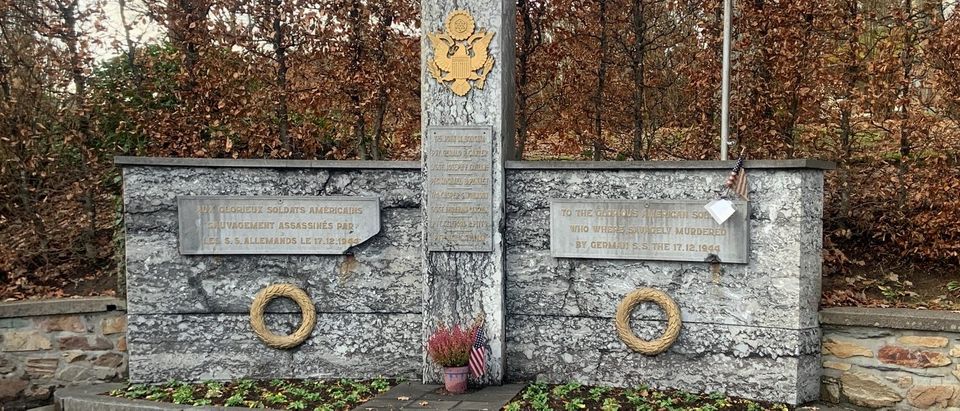I went to Belgium last December to honor my grandfather, an Army veteran who had served at the Battle of the Bulge 75 years earlier, but what I found when I got there was so much more.
I knew before I left that my husband’s great uncle, PFC Charles “Casey” Kruta had been killed at the Bulge, but the family had very few details about what actually happened. They knew he had been killed early on in the battle, which officially began December 16, 1944. But what stood out was the fact that he had likely been executed: the family was told that he had been shot in the back of the head.

PFC Charles “Casey” Kruta. Photo courtesy of Jim Kruta
A little research led me to PFC Kruta’s name on the muster rolls of D Company, 423rd Infantry Regiment (heavy weapons), part of the “Golden Lions” 106th Infantry Division. His unit took heavy casualties on December 19, just outside of Bastogne, and the remaining survivors were forced to surrender. PFC Kruta was likely executed by his captors some time after he surrendered. (RELATED: Read The True Story Behind The Christmas Message Delivered Amid The Blood And Snow Of WWII)
But when I got to Bastogne, I learned that the execution of prisoners of war was not standard practice for the German Army at that time — in fact, there was just one German officer who earned a reputation for carrying out such actions: Joachim Peiper.
Peiper was a Hitler Youth alumnus who later served as adjutant to SS head Heinrich Himmler and then as a Waffen SS commander in the field. He is most famous for his actions on December 17, 1944, in Malmedy, Belgium.
After directing the remnants of an American unit to surrender, Peiper ordered his men to open fire and gunned down 84 surrendering American troops. Their bodies were not found until the snow began to melt, and the story was relayed to American officials by Belgian citizens who had witnessed the atrocity.
As the day comes to an end, we remember PVT Louis Vairo, who fought in the #BattleoftheBulge and was killed in action during the Malmédy Massacre at Baugnez Crossroads, Belgium, December 17, 1944. We honor his service. #HonorThem pic.twitter.com/Bpp0O0yZCz
— Arlington National Cemetery (@ArlingtonNatl) December 18, 2019
But the massacre did not end there. In the days that followed, Peiper and his men cut a swath of brutality across the Eastern Front, killing Belgian civilians and executing prisoners at will. Based on his trajectory across the front and the fact that the other German officers were not generally prone to such actions, the most likely scenario is that Kruta and Peiper crossed paths — and the results proved fatal.
Even as we remember our fallen soldiers this Memorial Day, the Belgian city of Malmedy pays tribute to the American soldiers who were killed on their soil.

Malmedy memorial to American soldiers. Photo: Virginia Kruta
An American flag flies year round over the stone monument that sits just off the main road into the village of Malmedy. A golden eagle adorns the stone, and the inscription, in both English and French, reads, “To the glorious American soldiers who were savagely murdered by German S.S. the 17.12.1944.”


